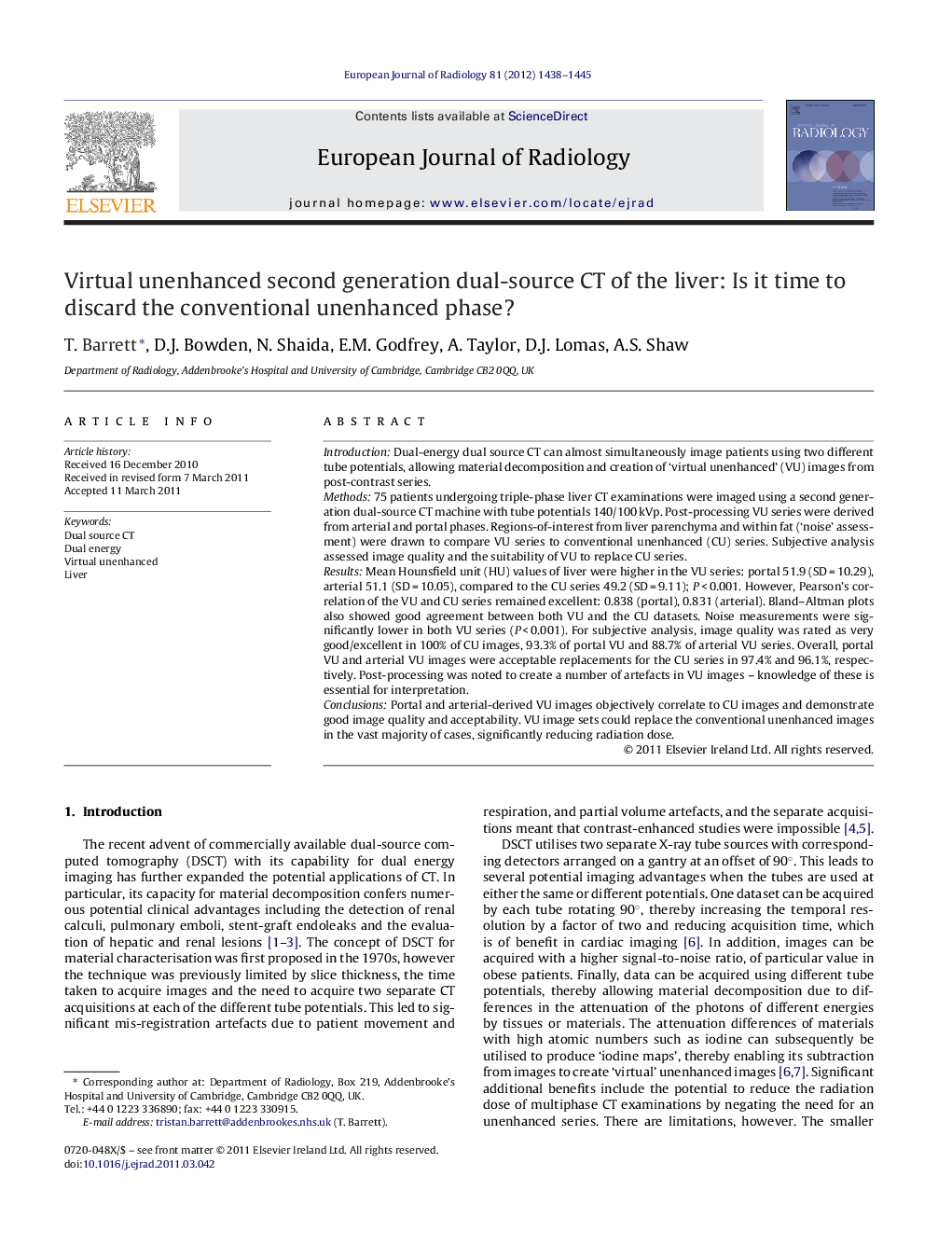| Article ID | Journal | Published Year | Pages | File Type |
|---|---|---|---|---|
| 4225750 | European Journal of Radiology | 2012 | 8 Pages |
IntroductionDual-energy dual source CT can almost simultaneously image patients using two different tube potentials, allowing material decomposition and creation of ‘virtual unenhanced’ (VU) images from post-contrast series.Methods75 patients undergoing triple-phase liver CT examinations were imaged using a second generation dual-source CT machine with tube potentials 140/100 kVp. Post-processing VU series were derived from arterial and portal phases. Regions-of-interest from liver parenchyma and within fat (‘noise’ assessment) were drawn to compare VU series to conventional unenhanced (CU) series. Subjective analysis assessed image quality and the suitability of VU to replace CU series.ResultsMean Hounsfield unit (HU) values of liver were higher in the VU series: portal 51.9 (SD = 10.29), arterial 51.1 (SD = 10.05), compared to the CU series 49.2 (SD = 9.11); P < 0.001. However, Pearson's correlation of the VU and CU series remained excellent: 0.838 (portal), 0.831 (arterial). Bland–Altman plots also showed good agreement between both VU and the CU datasets. Noise measurements were significantly lower in both VU series (P < 0.001). For subjective analysis, image quality was rated as very good/excellent in 100% of CU images, 93.3% of portal VU and 88.7% of arterial VU series. Overall, portal VU and arterial VU images were acceptable replacements for the CU series in 97.4% and 96.1%, respectively. Post-processing was noted to create a number of artefacts in VU images – knowledge of these is essential for interpretation.ConclusionsPortal and arterial-derived VU images objectively correlate to CU images and demonstrate good image quality and acceptability. VU image sets could replace the conventional unenhanced images in the vast majority of cases, significantly reducing radiation dose.
